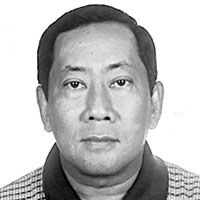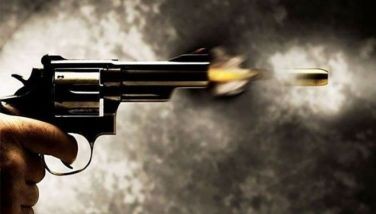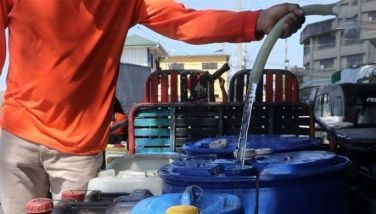Remembering the Tres de Abril uprising

Today is a historic day for Cebu. Unfortunately, thanks to a Manila-centric view of Philippine history, this historic incident was never mentioned in our history books during my school days and up to the present. This is the Tres de Abril uprising or the 3rd of April 1898 that happened in Cebu 111 years ago today where Cebu-based Katipuneros led by the charismatic (he came from Bacong, Negros Oriental) Pantaleon Villegas, who goes by the nom de guerre Leon Kilat, led an uprising along the road now named Tres de Abril and defeated the Spanish soldiers.
This story was well-recorded by then Freeman Assistant Editor Emil Justimbaste and first reported on June 12, 1998 during the Centennial of the Philippine Revolution. Alas, this was never given any importance by our local historians nor a place of honor in Philippine history. This is my way of reminding our readers that 111 years ago, Katipuneros in Cebu fought the Spaniards under Gen. Montero and won a short-lived victory!
Although a resistance movement was already organized in Cebu, however it was Leon Kilat who had a direct order from Gen. Emilio Aguinaldo to unite the underground movement in Cebu under the banner of the Katipunan. A surprise attack was planned for Good Friday, as the Guardia Civil would join the procession with their arms held down.
This famous battle for Cebu happened on Palm Sunday, where Cebuanos dressed properly to go to mass and have their palms blessed. But a dawn incident on April 3rd happened where some Katipunero friends of Leon Kilat were arrested by the Guardia Civil and thus forced Leon Kilat to make his move, and at 3 p.m. he met with the Spanish troops led by Sgt. Pedro Royo at the corner of Guadalupe road (now V. Rama Ave.) and Gen. Weyler St. (now Tres de Abril St.). They were a mere 15 meters of each other, when Sgt. Royo told the poorly (mostly bolos) armed Katipuneros to go home.
But instead of going home, the Katipuneros told Sgt. Royo that they were not afraid of Spanish guns. With that, the Spaniards started firing and then Leon Kilat immediately ordered his men to fall flat on the ground because there were only five rounds in the Spaniard’s rifles. Suddenly Leon Kilat’s men jumped and attacked the surprised Spaniards who were surrounded by the Katipuneros. Some of them managed to retreat towards the Puente dela Revolucion, now the bridge at the end of Colon Street. Loyalist troops came to the rescue of the beleaguered Spanish troops who covered their retreat towards downtown Cebu City.
Another battle was fought along Colon St. as a last ditch effort and when that failed the Spaniards retreated to the safety of the Fort San Pedro. From various accounts, it was ascertained that some 30 Spaniards were killed or wounded in that encounter, while 15 Katipuneros died on that historic day of April 3rd. While the Spaniards were retreating, the Katipuneros were busy helping the wounded and taking care of their dead, whilst getting the prized booty, the rifles of the dead Spanish soldiers. By 5 p.m. all Spanish troops were inside Fort San Pedro except for facilities like the San Agustin church that also had troops and ammunition. By nightfall, Talisay Katipuneros seized control of the town and killed the Spanish administrator.
Meanwhile, Gen. Montero was confident that he and his men would hold out inside the fort until reinforcements arrived. By nightfall, two gunboats, the Maria Cristina and Paraga arrived from Iligan. In the next three days, Cebu was in the hands of Cebuano Katipuneros, who started making their own government. But Leon Kilat was uneasy with the situation for as long as the Spanish troops were inside the fort. Efforts to try and scale the walls proved futile and the Katipuneros did not have cannons to bombard the fort and destroy it. So the decision was to starve the Spaniards inside.
But time was not on the side of Leon Kilat, although the food supplies of the Spaniards were now dwindling precariously. Word of the successful uprising caused many towns in Cebu to rise up against the Spaniards and most of them capitulated, running to Cebu with their priests in tow. But the tide soon changed in favor of the Spaniards when on Holy Thursday, April 7th the Spanish Cruiser Don Juan Austria arrived and the Katipuneros fled to the mountains and the far-flung towns of Cebu Province.
Leon Kilat sought refuge in Carcar and was killed by his own men as an offering in return for clemency from the Juez de Cochillo. But then, little did Leon Kilat and his men know that a couple of days before April 3 the days of Spanish rule was already numbered when the US Asiatic Fleet fought the Spanish fleet in the Battle of Manila Bay on April 1,1898 and Cebu had a couple of months of freedom until the Americans arrived here.
* * *
For e-mail responses to this article, write to [email protected]. Bobit Avila’s columns can also be accessed through www.philstar.com. He also hosts a weekly talkshow entitled, “Straight from the Sky” shown every Monday only in Metro Cebu on Channel 15 on SkyCable at 8:00 in the evening.
- Latest
- Trending





























